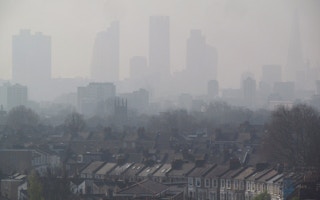Leaders of some of the world’s biggest cities vowed on Thursday to make all buildings carbon neutral by 2050, ensuring they make no contribution to climate change.
From London to Tokyo, 19 mayors said they would put in place regulations requiring all new buildings to be carbon neutral by 2030 and all existing ones to reach the same goal by 2050.
“Climate change poses an existential threat to New York City, and making our buildings more sustainable and efficient is a key part of the solution,” said Mayor of New York Bill de Blasio in a statement.
Houses, offices and other buildings account for more than half of all planet-warming gasses emitted by urban areas, according to C40 Cities, a network of cities pushing climate action that shepherded the latest commitment.
In London, Los Angeles and Paris, the share is as high as 70 percent of all greenhouse emissions, it said.
“Paris is home to some of the world’s most beautiful and iconic buildings … we recognise our responsibility to ensure every building, whether historic or brand new, helps deliver a sustainable future,” said Paris mayor Anne Hidalgo.
Experts said the target was feasible, but that more cities would have to follow suit if the world was to achieve the Paris climate goals.
“
Buildings are a large contributor to greenhouse gas emissions, so to meet reductions set out in the Paris Agreement, it’s critical that we tackle this problem.
Helen Clarkson, head, The Climate Group
The 2015 Paris Agreement set a goal of limiting a rise in average world surface temperatures to “well below” 2C (3.6F) above pre-industrial times, while “pursuing efforts” to limit rising temperatures to 1.5C (2.7F).
“The biggest challenge is ensuring that developers avoid cutting corners to save relatively small amounts in construction today, by passing retrofit costs onto future owners,” said Eric Lounsbury, director of environmental consultancy Carbon Trust.
“To achieve the ambitions of the Paris Agreement we will need all buildings to be net zero emissions by the middle of this century,” he told the Thomson Reuters Foundation.
Buildings that are net carbon neutral are powered by renewable sources and consume little energy, typically using LED lights, winter insulation and roof-top solar panels.
“Buildings are a large contributor to greenhouse gas emissions, so to meet reductions set out in the Paris Agreement, it’s critical that we tackle this problem,” said Helen Clarkson, head of The Climate Group, a charity promoting climate action.
The pledge was signed by London, Copenhagen, Johannesburg, Los Angeles, Montreal, New York City, Newburyport, Paris, Portland, San Francisco, San Jose, Santa Monica, Stockholm, Sydney, Tokyo, Toronto, Tshwane, Vancouver and Washington DC.
This story was published with permission from Thomson Reuters Foundation, the charitable arm of Thomson Reuters, that covers humanitarian news, women’s rights, trafficking, property rights, climate change and resilience. Visit http://news.trust.org)










